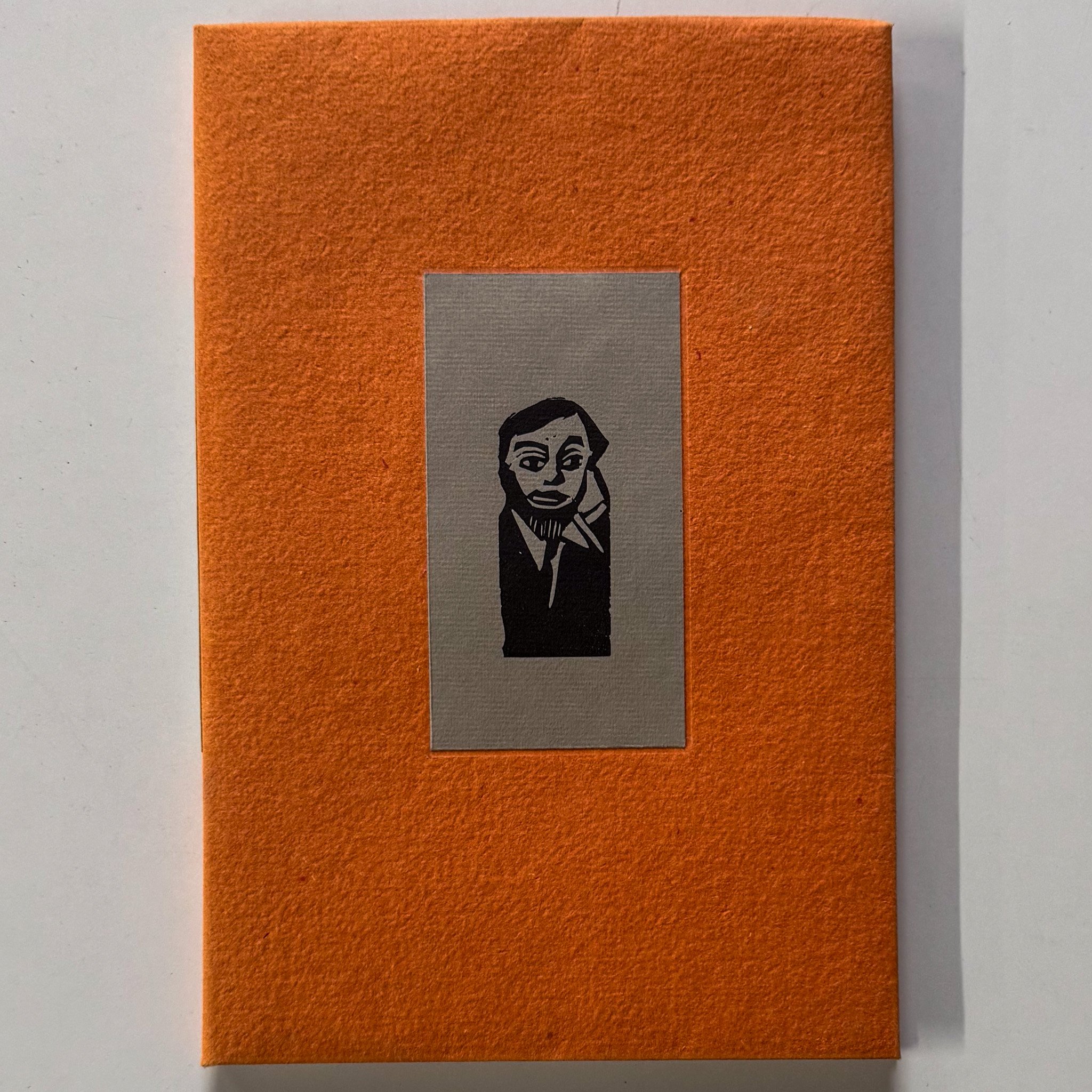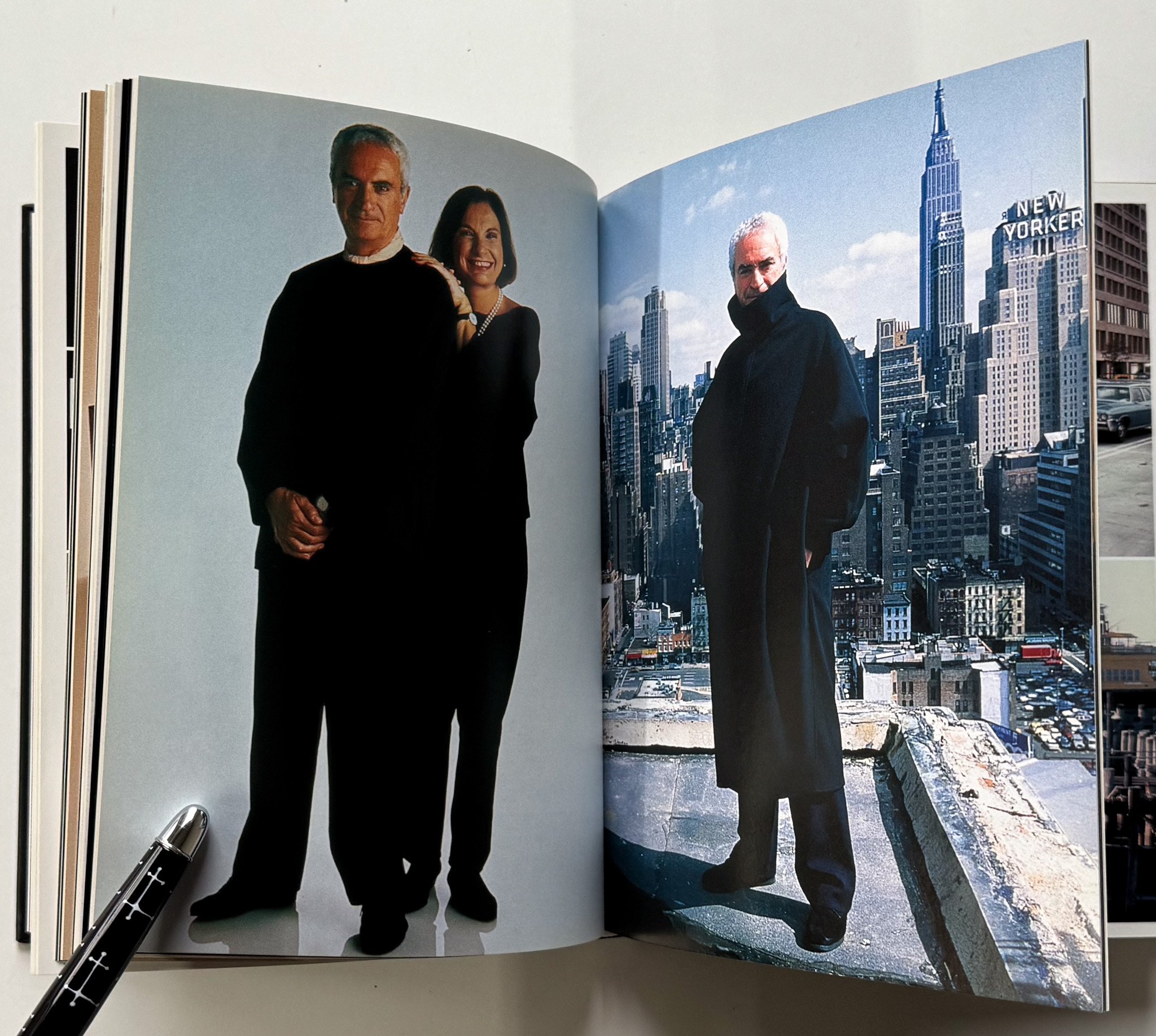 Image 1 of 7
Image 1 of 7

 Image 2 of 7
Image 2 of 7

 Image 3 of 7
Image 3 of 7

 Image 4 of 7
Image 4 of 7

 Image 5 of 7
Image 5 of 7

 Image 6 of 7
Image 6 of 7

 Image 7 of 7
Image 7 of 7








Linotype Faces at Huxley House (Type Specimen Book)
Type specimen book published in 1965 by Huxley House Ltd, a New York City firm offering typographic, design, and printing services. Stiff pictorial wrappers with plastic comb binding, unpaginated but about 114 pages. Walter Huxley studied and taught at the Art Institute of Chicago before returning to NYC to work for the American Type Founders Company. He established Huxley House along with Frank Hess in 1928. Early clients were type foundries, publishers, and designers including Alfred E. Knopf, Bauer Type Foundry, Country Life Magazine, and Kurt Volk. Later clients included advertising and public relations agencies such as Alfred Silberstein, Fred Wittner, and Kenyon & Eckhardt; designers Lester Beall, Warren Chappell, George Giusti, and Walter Dorwin Teague, and the corporations Corning Glass, Hanes Hosiery, Knoll Associates, Standard Oil, and Brooks Brothers. Per the prefatory note to the book, ”Huxley House is presenting a totally new concept in a Linotype Specimen Book, devoid of any typographic tricks. The energy and imagination used in the preparation of the book concentrated on one goal—to provide a functional tool for graphic arts personnel…The following pages contain showings of our complete machine matrix resources, in alphabetical order.” Minor rubbing and bumping to wrappers; interior clean and bright.
Type specimen book published in 1965 by Huxley House Ltd, a New York City firm offering typographic, design, and printing services. Stiff pictorial wrappers with plastic comb binding, unpaginated but about 114 pages. Walter Huxley studied and taught at the Art Institute of Chicago before returning to NYC to work for the American Type Founders Company. He established Huxley House along with Frank Hess in 1928. Early clients were type foundries, publishers, and designers including Alfred E. Knopf, Bauer Type Foundry, Country Life Magazine, and Kurt Volk. Later clients included advertising and public relations agencies such as Alfred Silberstein, Fred Wittner, and Kenyon & Eckhardt; designers Lester Beall, Warren Chappell, George Giusti, and Walter Dorwin Teague, and the corporations Corning Glass, Hanes Hosiery, Knoll Associates, Standard Oil, and Brooks Brothers. Per the prefatory note to the book, ”Huxley House is presenting a totally new concept in a Linotype Specimen Book, devoid of any typographic tricks. The energy and imagination used in the preparation of the book concentrated on one goal—to provide a functional tool for graphic arts personnel…The following pages contain showings of our complete machine matrix resources, in alphabetical order.” Minor rubbing and bumping to wrappers; interior clean and bright.
Type specimen book published in 1965 by Huxley House Ltd, a New York City firm offering typographic, design, and printing services. Stiff pictorial wrappers with plastic comb binding, unpaginated but about 114 pages. Walter Huxley studied and taught at the Art Institute of Chicago before returning to NYC to work for the American Type Founders Company. He established Huxley House along with Frank Hess in 1928. Early clients were type foundries, publishers, and designers including Alfred E. Knopf, Bauer Type Foundry, Country Life Magazine, and Kurt Volk. Later clients included advertising and public relations agencies such as Alfred Silberstein, Fred Wittner, and Kenyon & Eckhardt; designers Lester Beall, Warren Chappell, George Giusti, and Walter Dorwin Teague, and the corporations Corning Glass, Hanes Hosiery, Knoll Associates, Standard Oil, and Brooks Brothers. Per the prefatory note to the book, ”Huxley House is presenting a totally new concept in a Linotype Specimen Book, devoid of any typographic tricks. The energy and imagination used in the preparation of the book concentrated on one goal—to provide a functional tool for graphic arts personnel…The following pages contain showings of our complete machine matrix resources, in alphabetical order.” Minor rubbing and bumping to wrappers; interior clean and bright.





















